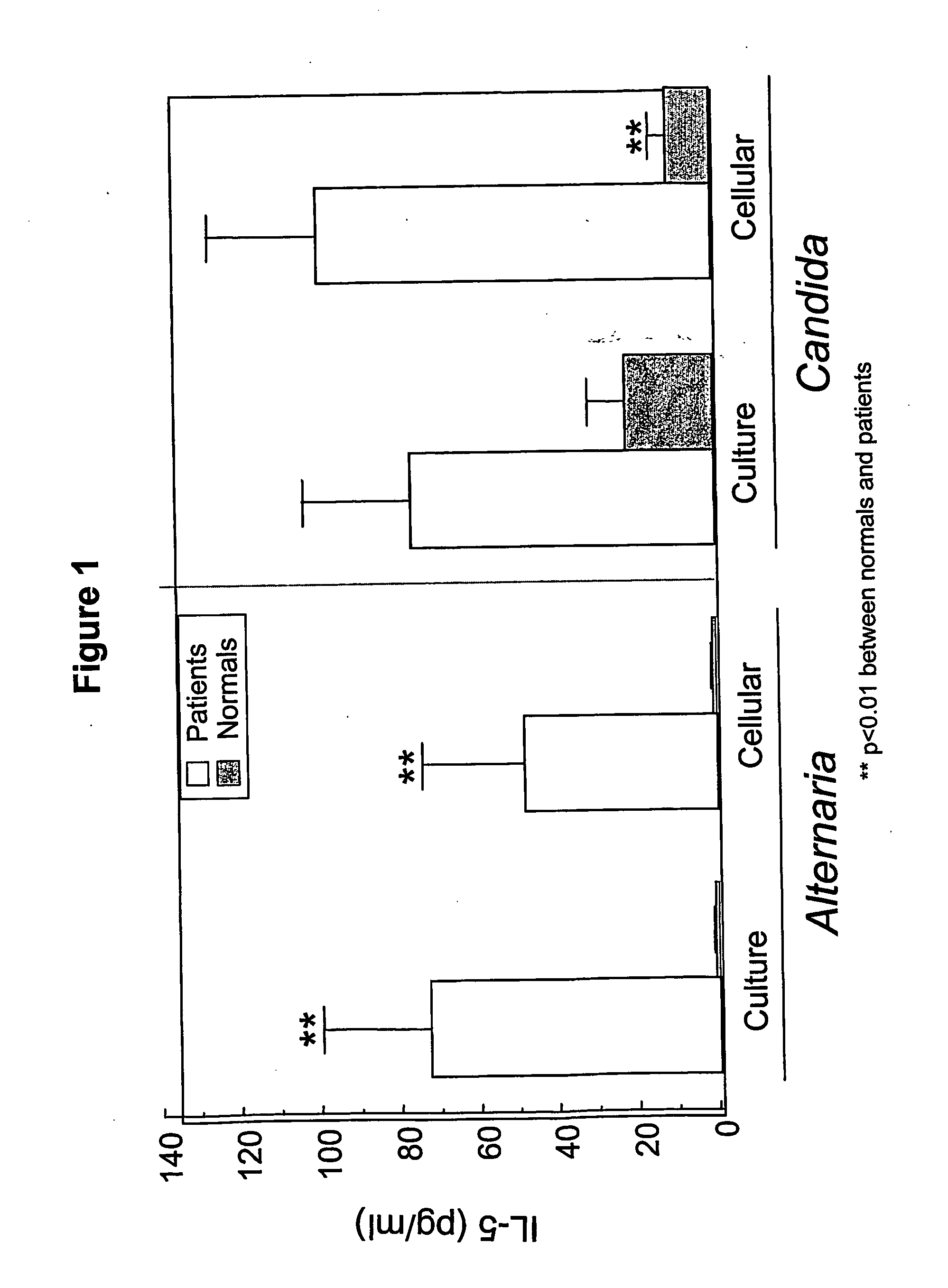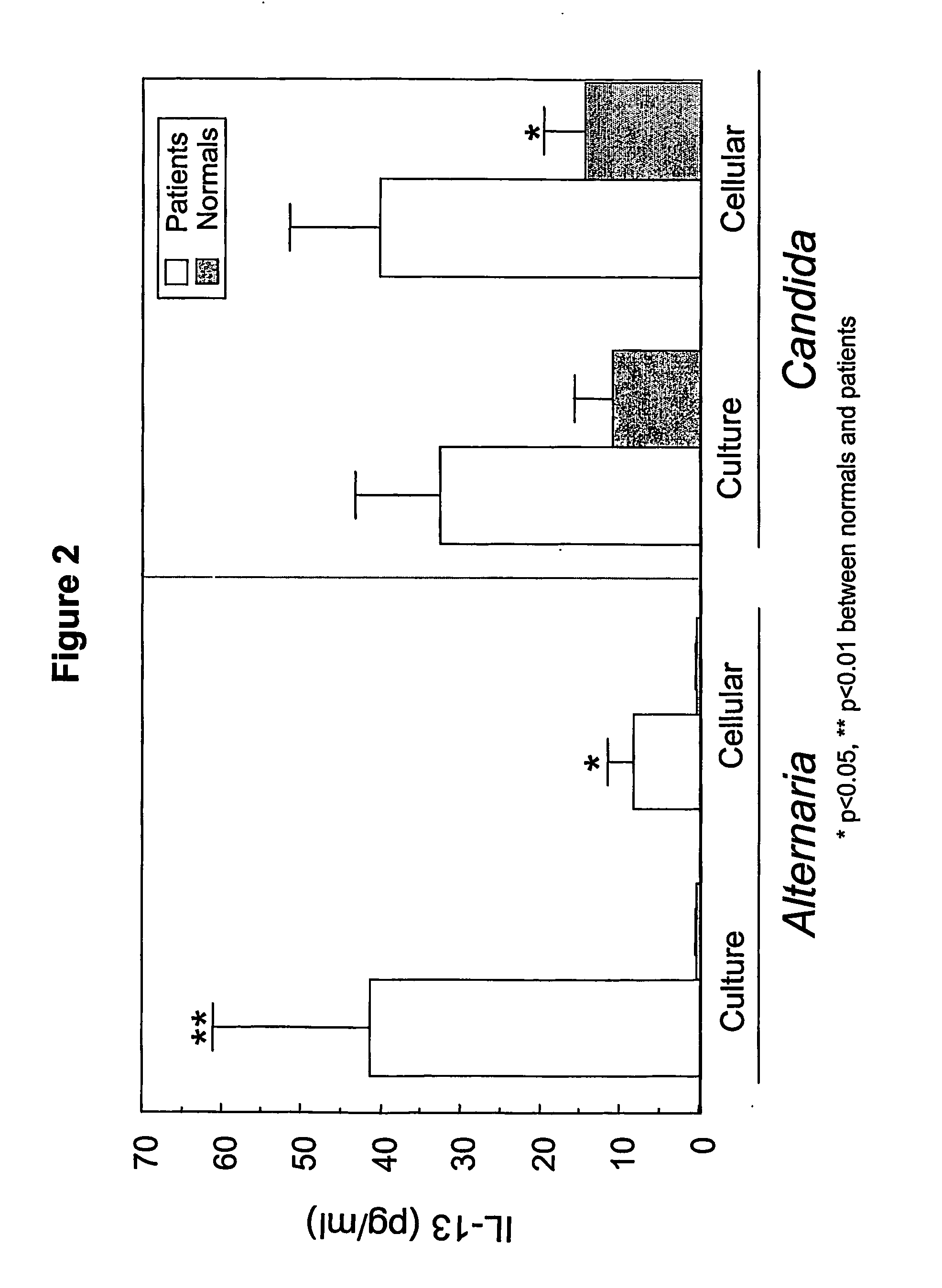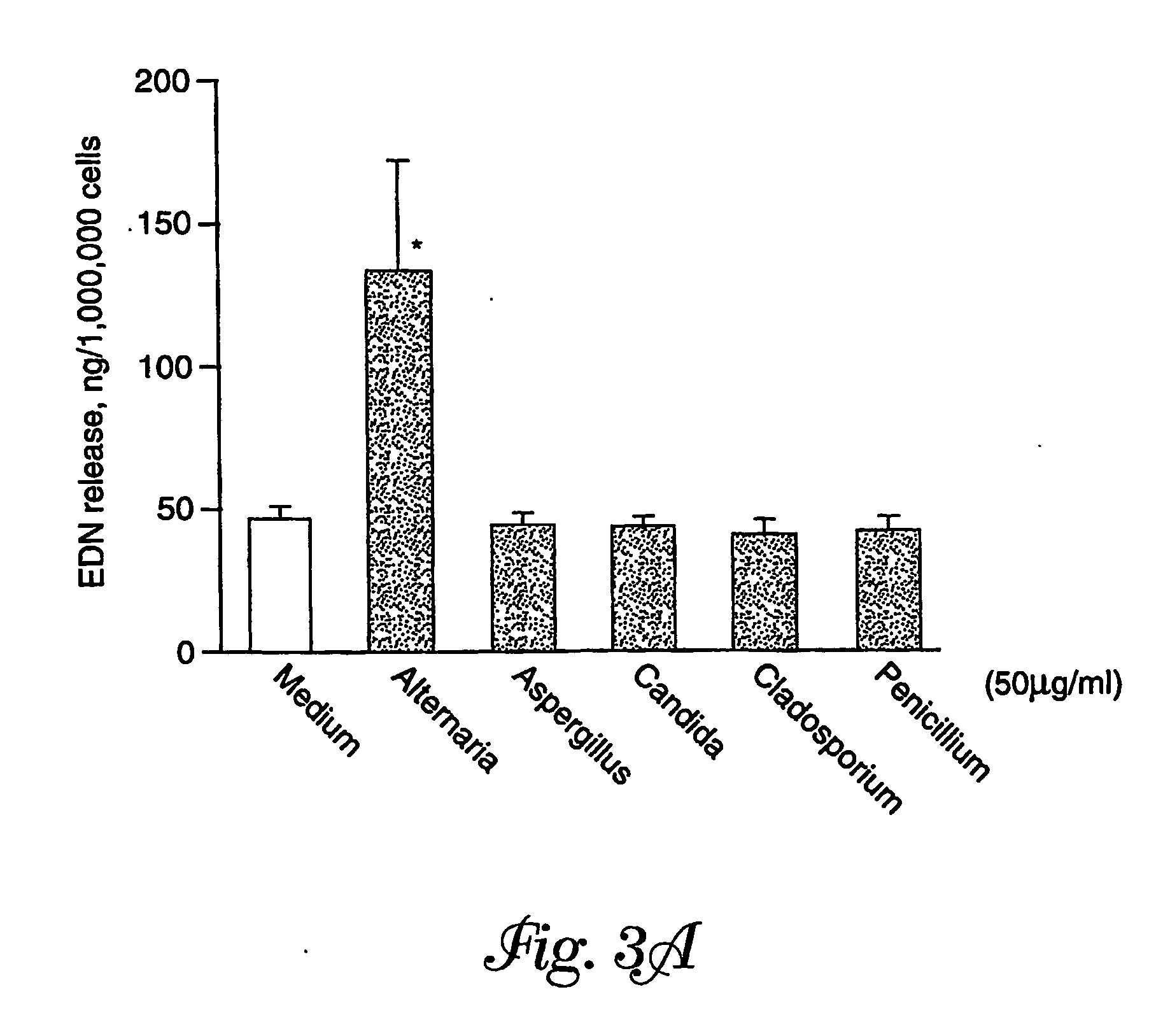Fungal antigens and eosinophil activity
a technology of eosinophil activity and antigen, applied in the field of fungal antigens and eosinophil activity, can solve the problems of afs often having a history of nasal-paranasal polyposis, serious medical problems affecting millions of people, and inability to effectively treat afs, etc., to achieve the effect of inhibiting the production of alternaria-induced il-5
- Summary
- Abstract
- Description
- Claims
- Application Information
AI Technical Summary
Benefits of technology
Problems solved by technology
Method used
Image
Examples
example 1
Lymphocytes from CRS Patients Produced IL-5 in Response to Fungal Antigens
[0091] The lymphocyte response to fungal products was examined. PBMC were isolated from CRS patients or from normal individuals, suspended in RPMI 1640 medium supplemented with 10% bovine calf serum, and incubated for 3 days with 50 μg / mL of extracts from five fungal species most frequently isolated from nasal cavities of patients (Alternaria alternata, Candida albicans, Aspergillus versicolor, Cladosporium herbarum, and Penicillium notatum). All extracts were purchased from Greer Laboratories (Lenoir, N.C.). Extracts from both fungal culture medium (“culture”) and fungal organisms (“cellular”) were tested because of potential differences in antigenicity. After incubation of the fungal extracts with the PBMC from patients or normal individuals, cell-free supernatants were collected, and the amount of IL-5 in each sample was measured by ELISA (Endogen, Inc., Woburn, Mass.). IL-5 was chosen as a marker of the l...
example 2
Alternaria Antigens Induce Activation and Degranulation of Eosinophils
[0094] The ability to induce eosinophilic degranulation was measured by EDN release. Human eosinophils were isolated from normal volunteers and volunteers reporting past allergies, hay fever, and / or asthma by Percoll density gradient centrifugation and magnetic cell sorting using MACS anti-CD16 microbeads as described by Hansel et al. (1991, J. Immunol. Methods, 145:105). Briefly, after peripheral blood was overlaid on an isotonic Percoll solution (1.084 g / ml; Sigma), the blood was centrifuged at 1000×g for 30 minutes at 4° C. Mononuclear cells at the interface were removed, and erythrocytes in the sediment were lysed by two cycles of hypotonic water lysis. Isolated granulocytes were washed twice with PIPES buffer (25 mM PIPES, 50 mM NaCl, 5 mM KCl, 25 mM NaOH, 5.4 mM glucose, pH 7.4) containing 1% bovine calf serum (Hyclone Laboratories; Logan, Utah). Cells were then incubated with an equal volume of anti-CD16-c...
example 3
Characteristics of Alternaria Antigens
[0102] The mechanism of the eosinophil degranulation response to Alternaria antigens was examined. To test whether Alternaria proteases are involved in eosinophil activation, Alternaria extracts either were pretreated with a cocktail of protease inhibitors (Complete™, Roche Molecular Biochemicals, Indianapolis, Ind.) or were not pretreated (control). Eosinophils then were incubated with the pretreated or control Alternaria extracts for 4 hours, and EDN release was measured. The cocktail of protease inhibitors produced an 80% inhibition of Alternaria-induced eosinophil degranulation. In contrast, the same protease treatment did not affect phorbol myristate acetate (PMA)-induced degranulation. Eosinophil degranulation induced by 1 μM platelet activating factor also was not affected by protease inhibitors (−5%±4% inhibition, mean±range, n=2). These findings suggest that protease activity in Alternaria extracts is necessary for the induction of eos...
PUM
| Property | Measurement | Unit |
|---|---|---|
| concentration | aaaaa | aaaaa |
| concentration | aaaaa | aaaaa |
| incubation time | aaaaa | aaaaa |
Abstract
Description
Claims
Application Information
 Login to View More
Login to View More - R&D
- Intellectual Property
- Life Sciences
- Materials
- Tech Scout
- Unparalleled Data Quality
- Higher Quality Content
- 60% Fewer Hallucinations
Browse by: Latest US Patents, China's latest patents, Technical Efficacy Thesaurus, Application Domain, Technology Topic, Popular Technical Reports.
© 2025 PatSnap. All rights reserved.Legal|Privacy policy|Modern Slavery Act Transparency Statement|Sitemap|About US| Contact US: help@patsnap.com



